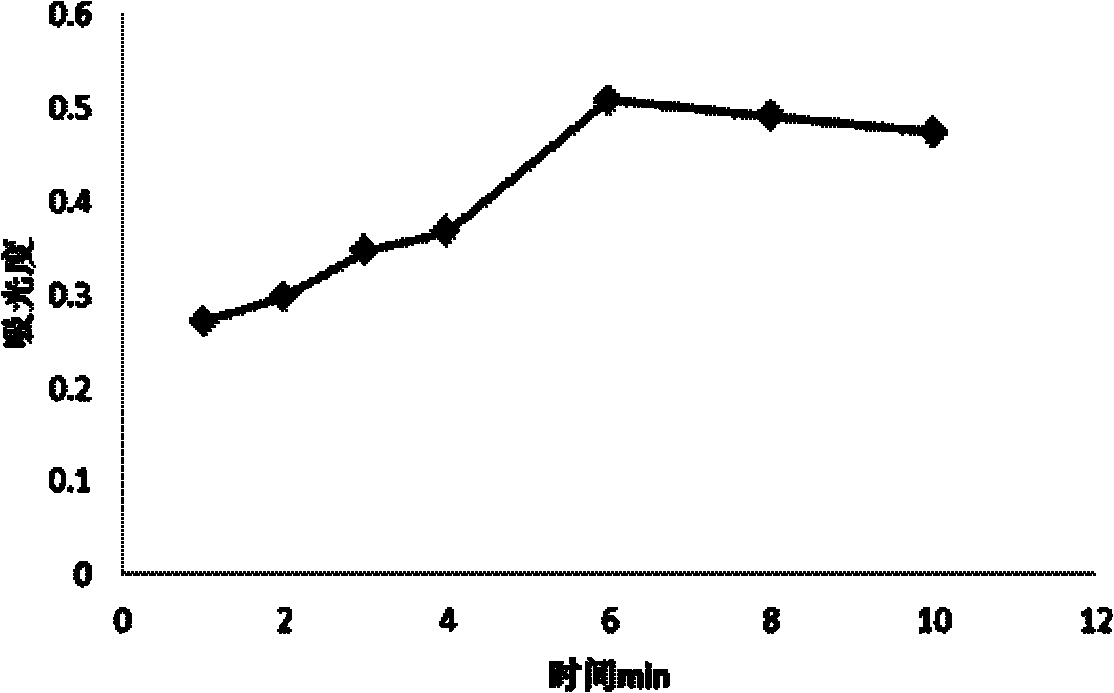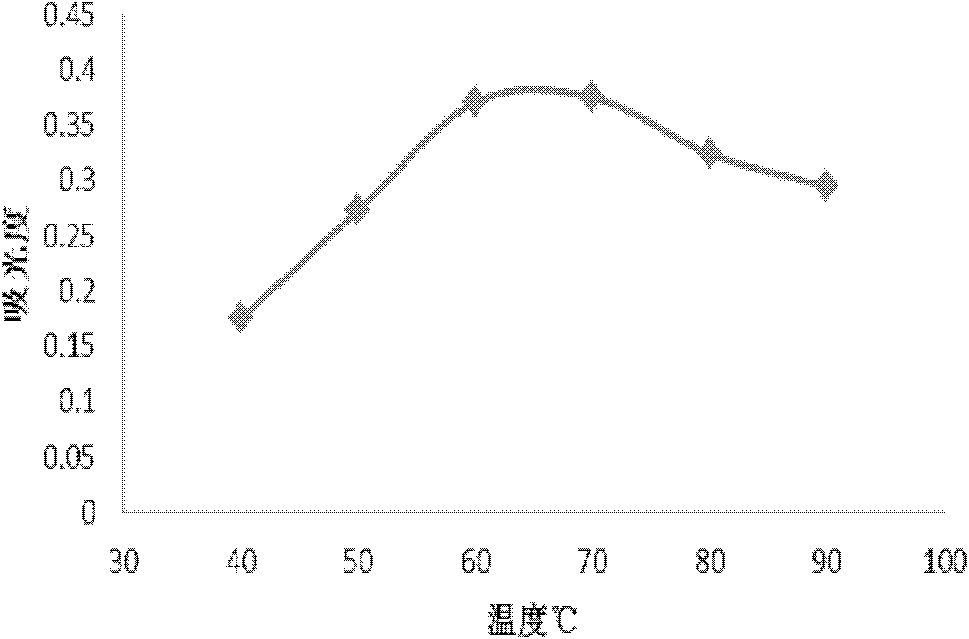Rapid Quantitative Detection Method of Cyanopyrethroid Pesticide Residues in Tea
A quantitative detection method and pyrethroid technology are applied in the preparation of test samples, material analysis by observing the influence of chemical indicators, and analysis by chemical reaction of materials, etc., which can solve the high cost and technical requirements. high, time-consuming and other problems, to achieve the effects of good stability, high sensitivity and thorough pesticide reaction
- Summary
- Abstract
- Description
- Claims
- Application Information
AI Technical Summary
Problems solved by technology
Method used
Image
Examples
Embodiment 1
[0034] Take the dry tea obtained from the tea science base of Huazhong Agricultural University as the raw material, weigh 3g and grind it with a mortar, put it into a 50ml triangular flask, add reagent 1, and ultrasonic (KQ-300DZ digitally controlled ultrasonic) Extract for 15 minutes; use cotton to filter the extract into the reaction device (3); wash the filter residue twice with reagent one, and combine the filtrate; add reagent two to the three-necked bottle, connect the device (see attached figure), close the valve (6), and open Valve (5), open (TH-110B atmospheric sampler) (8), stir in a water bath at 65°C (DF-101S collector type constant temperature heating magnetic stirrer), pump air for 6 minutes; open valve (6), close the valve (5), add reagent 3 through the addition funnel (2), pump air and collect for 10 min; turn off the pump (8), take off the collection bottle (7) and add reagent 4 and reagent 5, add reagent 6 after standing for 3 min, and react for 30 min Colori...
Embodiment 2
[0035] Example 2: selection of conditions for exclusion of interfering components in tea
[0036] Like the method in Example 1, different pretreatment processes were adopted for the tea samples, and it is expected to eliminate the interfering components in the tea leaves. The results are shown in Table 2, and a preliminary judgment has been made on the basic properties of the interfering components in the tea itself, that is, they are less polar and need to be reacted with alkali to generate HCN gas by adding acid. Through petroleum ether leaching treatment, the leaching and hydrolysis reactions are separated, the interfering components in the tea itself are eliminated, and the false positive problem of the detection of cyanopyrethroid-containing pesticide residues in the tea is solved, so that it can be clearly seen by the naked eye through the color change Qualitative judgment also enhances the accuracy of quantitative detection.
[0037] Table 2 Comparison of the effects o...
Embodiment 3
[0041] Example 3: Influence of carrier gas quality on detection effect
[0042] As in the method of Example 1, when pumping air to transfer HCN gas, nitrogen purging, adding a gas washing bottle before the air pumping device, and directly pumping air were used respectively. as attached figure 1 , 5% sodium hydroxide is filled into the washing bottle at the front end of the reaction device to filter the interfering gas in the air. The measured results are shown in Table 3. The air pumping method by adding a gas washing bottle can not only achieve the same effect as nitrogen purging, but also simplify the device, reduce the cost, and be easy to popularize and apply.
[0043] Table 3 The influence of different carrier gases on the detection effect (absorbance)
[0044]
PUM
 Login to View More
Login to View More Abstract
Description
Claims
Application Information
 Login to View More
Login to View More - R&D
- Intellectual Property
- Life Sciences
- Materials
- Tech Scout
- Unparalleled Data Quality
- Higher Quality Content
- 60% Fewer Hallucinations
Browse by: Latest US Patents, China's latest patents, Technical Efficacy Thesaurus, Application Domain, Technology Topic, Popular Technical Reports.
© 2025 PatSnap. All rights reserved.Legal|Privacy policy|Modern Slavery Act Transparency Statement|Sitemap|About US| Contact US: help@patsnap.com



